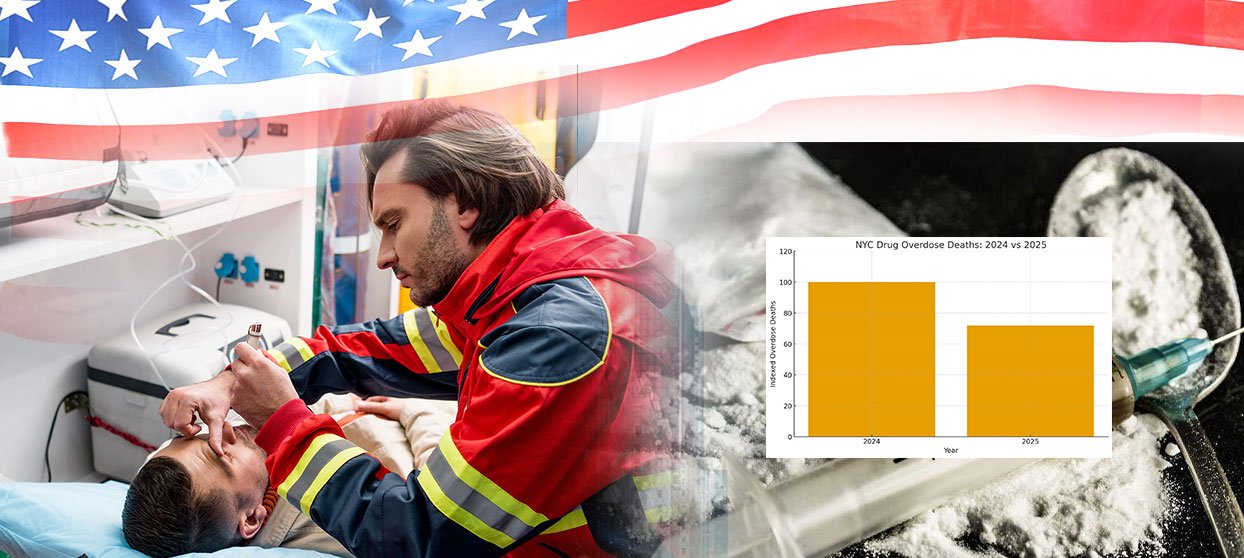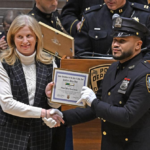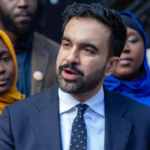“Every four hours, a New Yorker dies from drugs” — Unequal progress exposes deep social divides
By Sadia J. Choudhury | New York
New York City has seen a 28% decline in drug overdose deaths over the past year — a rare glimmer of hope in a long battle against addiction and despair.
Yet beneath the headline, the reality remains grim: for many low-income, minority, and immigrant communities, the drug epidemic continues to take a devastating toll.
A Glimpse of Hope, Unevenly Shared
According to the latest data from the NYC Department of Health and Mental Hygiene, overdose deaths fell sharply in 2025 compared to 2024.
Experts credit the decline to several major interventions:
• Expanded distribution of Naloxone, the life-saving overdose reversal drug
• Growth of harm-reduction centers across the city
• Increased funding for addiction recovery programs
• And replacing police-led enforcement with health-based outreach and education
But the progress is uneven.
Neighborhoods such as The Bronx, East Harlem, and parts of Brooklyn remain at the epicenter of the crisis — areas where poverty, racial inequities, and lack of healthcare access amplify the harm.
Fentanyl: The City’s Deadliest Threat
Public health experts warn that Fentanyl, a synthetic opioid up to 50 times stronger than heroin, remains the driving force behind most overdose deaths.
• Over 80% of overdose fatalities in 2025 involved fentanyl.
• Even the smallest trace can kill, as the drug is often mixed with cocaine or counterfeit pills.
• “A pinch of fentanyl can destroy an entire family,” said Dr. Caroline Mendoza, a city health officer.
She added, “Drug availability, hopelessness, and untreated mental illness form the perfect storm behind this epidemic.”
The Human Toll
In East Harlem, Melissa Garcia lost her 23-year-old son to an overdose.
“My son didn’t even know what he was taking,” she said through tears. “He just wanted to sleep for a while.”
Her story mirrors that of countless families across New York — fighting an invisible enemy that claims lives silently, night after night.
The Road Ahead
City officials admit that the fight is far from over.
To sustain progress, they emphasize a balanced approach — not punishment, but prevention and compassion.
Key recommendations include:
• Expanding harm-reduction centers in every borough
• Increasing mental health and addiction education in schools and communities
• Creating job and housing opportunities for people recovering from addiction
• Building stronger neighborhood-based response systems
Analysts say the only way forward is to address the social and emotional roots of drug use, not just its symptoms.
A Warning for the Future
The city’s Overdose Prevention Unit issued a stark warning earlier this year:
“If we don’t contain the spread of fentanyl, this progress will vanish.”
They also cautioned that homeless, mentally ill, and impoverished New Yorkers remain at the highest risk — often left behind in recovery efforts.
Conclusion
New York may have taken a step forward, but the journey is far from complete.
A 28% drop in overdose deaths is encouraging — yet true victory will mean more than lower numbers.
It will mean giving people a real chance to live again. A drug-free New York begins with empathy, awareness, and collective responsibility.
Stay well. Stay kind. Save one another.







